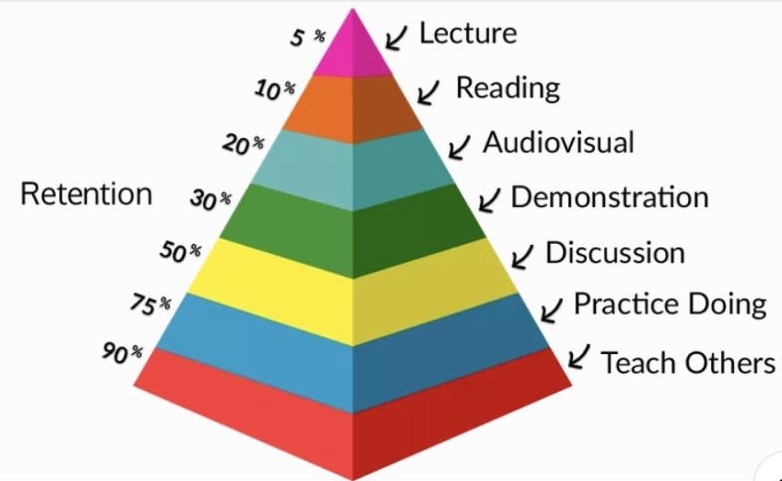15 Ways to Reimagine Education
3. Place Students in Mixed Age Groups with Mixed Abilities.
Problems of Age Grouping
Grouping children by age can exacerbate competitiveness between pupils. Where children are compared against each other in their age groups, school work can become a source of anxiety. Age-grouping also works against the development of cooperation, compassion and nurturance.
Research shows that mixing ages at school has benefits for both the younger and older members of the group.
Older children help the younger ones, and in this way, they learn to lead and nurture, and develop a concept of themselves as mature and caring (Gray, 2015). It also has a positive impact on students’ ability to retain information.

The Learning Pyramid shows how more traditional methods of teaching (lectures, reading and demonstrations) are much less successful in terms of how much information a student can retain. The more students actively participate in the learning process, the more information they can recall.
Studies have found that after 24 hours, we retain up to 30% of what we’ve been taught when formal teaching methods are used. When students are given the opportunity to teach others what they have learnt, 90% of the information can be retained.
Younger children benefit too. They learn skills and sophisticated ways of thinking from the older ones. For example, they can receive emotional support and care that children of their own age wouldn’t be able to provide.
These learning benefits can’t be realised if children are only allowed to mix with others of their own age.
Ability Grouping Limits Student Progress

For similar reasons, setting and streaming by ability has been proved to be counterproductive. The Education Endowment Foundation (EEF) explains these terms as follows:
Setting:- Grouping pupils in a year group into classes for specific subjects, such as Maths and English, but not across the whole curriculum.
Streaming:- Grouping pupils into classes for all or most of their lessons, so that a pupil is in the same group regardless of the subject being taught.
The EEF supports teachers and senior leaders by providing evidence-based resources to improve practice and boost learning. They found that on average, pupils experiencing setting or streaming make slightly less progress than pupils taught in mixed attainment classes.
They say that overall the effect on attainment is small, and it appears that setting or streaming is not an effective way to raise attainment for most pupils.
Setting or streaming may also have an impact on wider outcomes such as confidence. Some studies from the broader evidence base conclude that grouping pupils on the basis of attainment may have longer term negative effects on the attitudes and engagement of low attaining pupils, for example, by discouraging the belief that their attainment can be improved through effort.
Further Reading on Why Progressive Alternatives are Needed
Please visit 15 Ways to Reimagine Education

